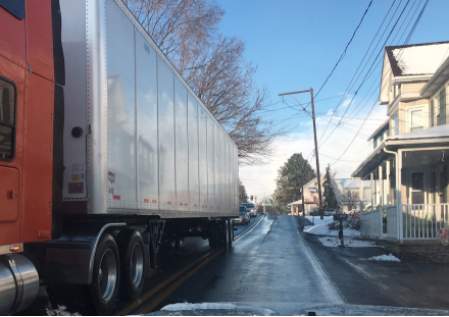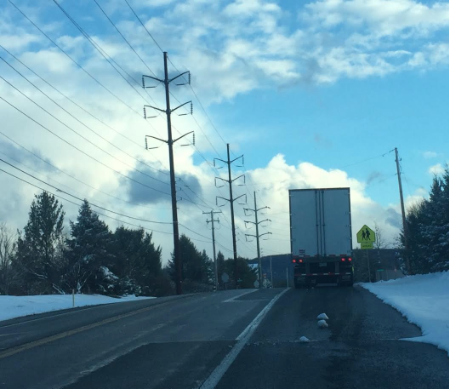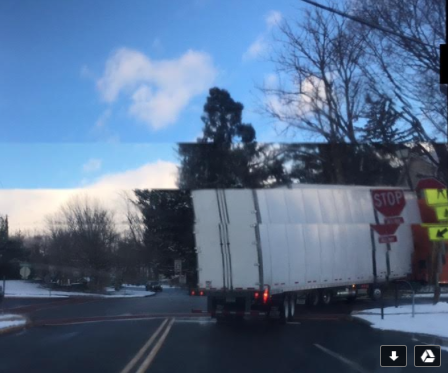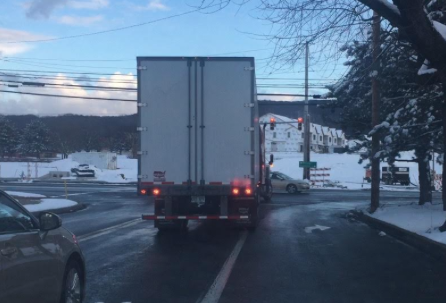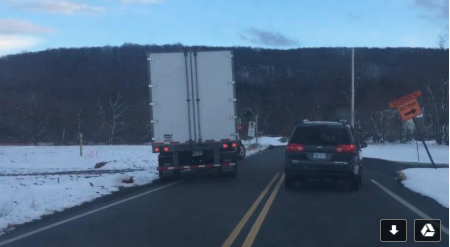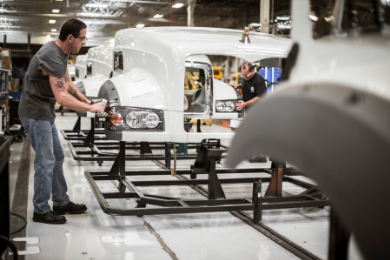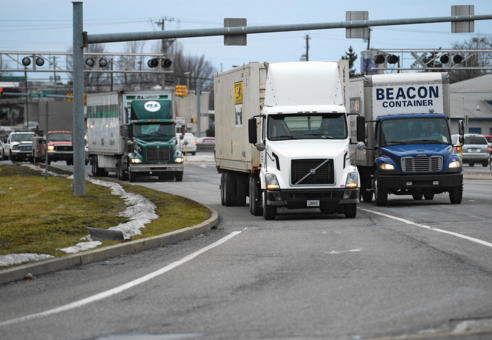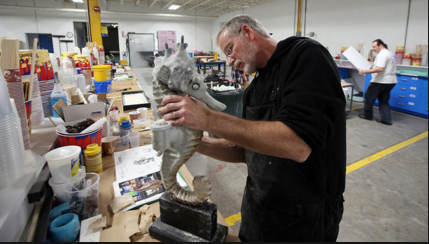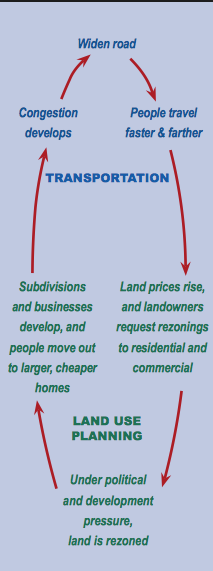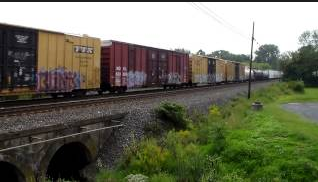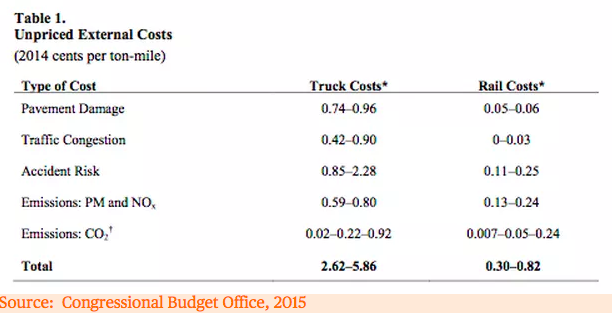So when I see errant trucks on residential roads in our township I tend to (time permitting) follow them. I do this fairly often (since it happens very often) in an effort to try to figure out where they are coming from or heading to and why they end up in the wrong places (often dangerous places) so frequently.
Here is an example from last week where I happened to have someone in the car with me to take photos. My intention here is not to call out the individual driver (though in this case he exhibited some pretty egregious decision making) but rather continue to shine a light on the issue in an effort to try to find the solution. Not a bandaid, but the solution.
Variations of what you see below have become a common occurrence on the townships road network. On a daily basis.
So first, this is what it’s like staring down an oncoming truck on Willow Ln. The worst part happens just before this when the truck forces your right wheels almost entirely off the road and into someones front yard. *Note we actually got word today that PennDOT is honoring the townships request to post signs restricting trucks on Willow Ln. This of course is only part of the battle. As now the inevitable need to enforce the signs is the next step.
Clearly lost, a little further along still on Willow Lane (after a couple more encroachments at the S turns after the bridge) The truck pulled over for a good 5 minutes. Blocking the crosswalk. Probably I would guess seeking directions. Those directions (as evidenced in the following photos) did not help. . .
You would think the truck is heading to Rt. 100. And you’d be correct. But not before an inexplicable detour around Willow Lane Elementary/Fire Station. Next the truck took a right onto Millcreek Rd. making a big circle around the fire dept. WLES. Here in this photo it is turning onto Sauerkraut Ln. Blatantly ignoring that Sauerkraut is restricted “no trucks”.
Finally making it out to Rt. 100, here the truck lines up to make the right hand turn taking up the entire left turn lane of Willow. Any car that gets into the right lane will be in a blind spot.
So now we got a straight shot to the trucks destination on Industrial Blvd.? (Pratt Industries) You would think, but not quite yet. Some more inexplicable decision making and subsequent havoc to cause first. Next our truck adventure takes a detour onto Gehman Rd. Here is where the fun really begins.
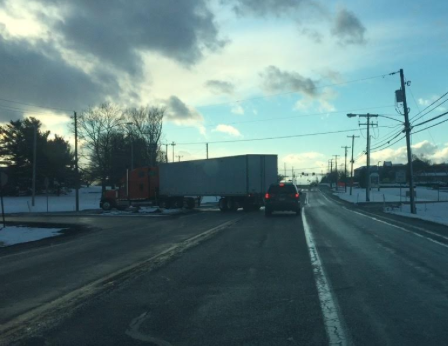
Next maneuver takes two pictures. Upon approaching Scenic View the truck sees and apparently decides to obey the signs prohibiting trucks from heading further up to Mountain Rd. This is good. As a ton of property damage has been done up that way. So instead of taking Scenic View (which I have argued in the past should be restricted as it ends up being the “turnaround”) The truck executes a jack-knifed u-turn.
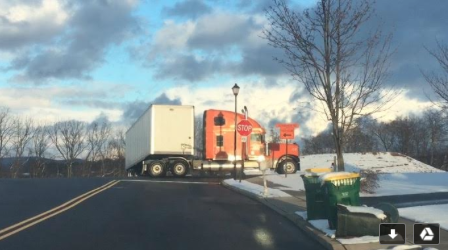
The U-turn. Stopped traffic in all directions for a few minutes. Moments after this photo the truck completely jack-knifed it’s trailers pushing it sideways through the mud.
The rest of the story is comparatively un-eventful. Just your standard multiple oncoming traffic encroachments but the driver managed to finally and thankfully without an accident make it to the destination (Pratt) on Industrial Blvd via Rt. 100 to Alburtis Rd.
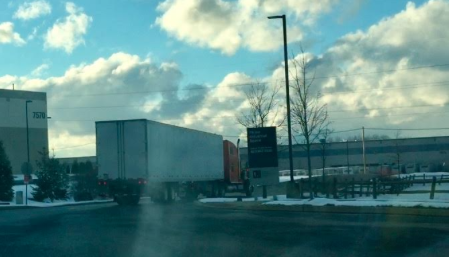
Almost a half hour later, thankfully the truck finally arrives at Pratt Industries completely it’s harrowing Lower Mac adventure through the residential heart of our township.

